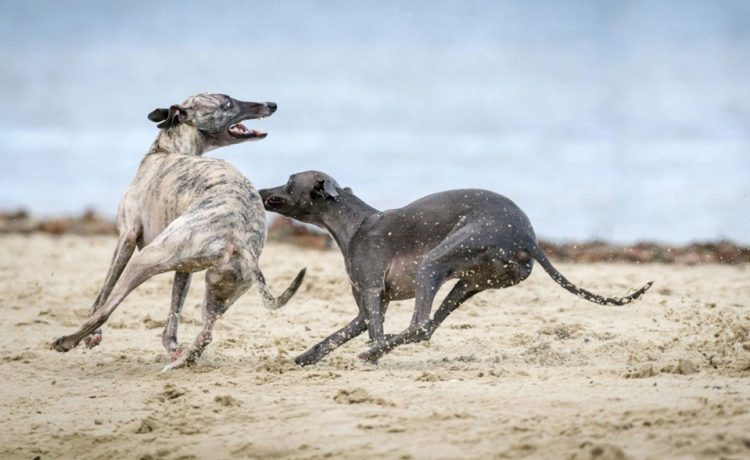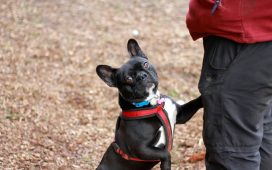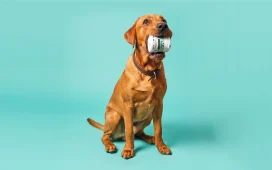Dogs can have a wide range of personalities – from calm and collected to outgoing and spunky, the possibilities for your dog’s demeanour are endless. However, all dogs, regardless of their true personality, there is a potential for them to be reactive.
Unlike aggression, which is a behaviour aimed at causing harm or asserting dominance, reactivity is an overreaction to specific stimuli in the environment. Even the sweetest, gentlest dog can be reactive if they are triggered.
This overreaction is often fueled by fear, frustration, or excitement, rather than a desire to intimidate or injure. Reactive dogs are not inherently aggressive; they are simply more sensitive to certain triggers, leading to responses that can seem excessive or disproportionate to the situation.
Common Triggers of Reactivity
Identifying what triggers a reactive response in dogs is crucial for managing this behaviour. Common triggers include:
Other Dogs: Many reactive dogs display signs of anxiety or aggression when encountering other dogs, often stemming from poor socialisation, past negative experiences, or lack of confidence.
Strangers: Dogs might react to unfamiliar people due to fear, protective instincts, or previous trauma.
Loud Noises: Sounds like thunderstorms, fireworks, or construction can provoke a reactive response in sensitive dogs.
Moving Objects: Cars, skateboards, and bicycles can trigger a chase or fear response.
New Environments: Unfamiliar settings can overwhelm a dog, leading to reactive behaviours as they attempt to navigate their anxiety.
Understanding the specific triggers for your dog is a pivotal step in addressing reactivity.
Signs of Reactivity
Recognizing the signs of reactivity in dogs allows owners to intervene early and manage the behaviour effectively. Signs of reactivity include:
- Aggressive Barking: Loud, incessant barking at the sight or sound of their triggers.
- Lunging: Moving forward aggressively towards the trigger.
- Snapping or Biting: Attempting to bite the trigger, often a last resort when they feel cornered or unable to escape.
- Pacing or Restlessness: Signs of anxiety and discomfort when near their triggers.
- Whining or Yelping: Vocalizations indicating stress or fear.
By identifying these behaviours, owners can better understand the emotional state of their dogs and take steps to help them feel more secure.
Psychological Aspects of Reactivity
Reactivity is not just about a dog’s immediate reaction to stimuli but also encompasses their emotional and physiological response. Fear, anxiety, and excitement play significant roles in a dog’s reactive behaviours. Physiologically, this can manifest as an increased heart rate and a surge in stress hormones like cortisol, which are crucial indicators of a dog’s stress levels and reactivity to various stimuli, including other dogs, strangers, and unfamiliar situations.
The causes of reactivity are multifaceted. Traumatic experiences and insufficient or incomplete socialisation during a dog’s formative weeks can significantly impact their likelihood of developing reactive behaviours. Trauma can stem from negative encounters or the stress of living in an environment like a kennel, which can exacerbate underlying anxieties.
Socialisation, on the other hand, is pivotal for building a dog’s confidence and resilience against fear and anxiety in new situations. Genetics also play a role, with some breeds showing predispositions to reactivity, which can be exacerbated by factors such as breeding practices focused more on physical attributes than behavioural temperament.
Interestingly, research has suggested potential neurological and genetic bases for reactivity. Some dogs may have a predisposition towards emotional reactivity akin to Intermittent Explosive Disorder in humans, indicating a possible hardwired neurological basis for these behaviours. This type of reactivity, while manageable, might not be completely reversible.
Furthermore, toy breeds like Cavoodles (Cavalier King Charles Spaniel x Poodle) have been identified as possibly more prone to reactivity, potentially as an unintended consequence of the selective breeding that emphasises their small size. This highlights a complex relationship between a dog’s physical characteristics and their behavioural tendencies.
Managing and Reducing Reactivity
Addressing dog reactivity requires a combination of training, lifestyle adjustments, and patience. Here are practical strategies to manage and reduce reactivity:
Positive Reinforcement Training: Reward-based training that encourages calm behaviour in the presence of triggers can gradually desensitise a dog to stimuli that previously caused a reactive response.
Controlled Exposure: Gradually introducing the dog to their triggers in a controlled, safe environment can help reduce their sensitivity over time.
Exercise and Mental Stimulation: Regular physical exercise and mental engagement can help reduce overall stress levels, making dogs less prone to reactivity.
Routine and Predictability: Establishing a consistent routine can provide a sense of security and reduce anxiety.
Professional Help: For severe cases, working with a professional dog trainer or a veterinary behaviourist can provide tailored strategies and support.
It’s crucial for owners to remain patient and consistent throughout this process. Reactivity can’t be “cured” overnight, but with time and dedication, significant improvements can be made.
The Role of Professionals
In cases of severe reactivity, or when owners feel overwhelmed, seeking the help of professional dog trainers or behaviourists is advisable. These types of pet services are typically available in most major cities around the world. Experts can assess the dog’s behaviour, identify underlying causes, and develop a personalised training plan. Their expertise can be invaluable in navigating the complex journey of managing reactivity.
Importance of Early Socialization and Training
Preventing reactivity from developing or escalating often begins in puppyhood. Early socialisation and training are essential in helping puppies grow into well-adjusted adults. Exposing them to a variety of people, animals, environments, and situations in a positive manner can significantly reduce the likelihood of reactivity later in life.
Conclusion
Dog reactivity is a challenging yet manageable behaviour that requires understanding, patience, and consistent effort from dog owners. By recognizing the signs of reactivity, understanding its triggers and psychological roots, and employing effective management strategies, it’s possible to improve the quality of life for both dogs and their owners. Remember, every dog is an individual, and what works for one may not work for another. Stay committed, seek professional guidance when needed, and celebrate the small victories on your journey to a calmer, happier canine companion.















